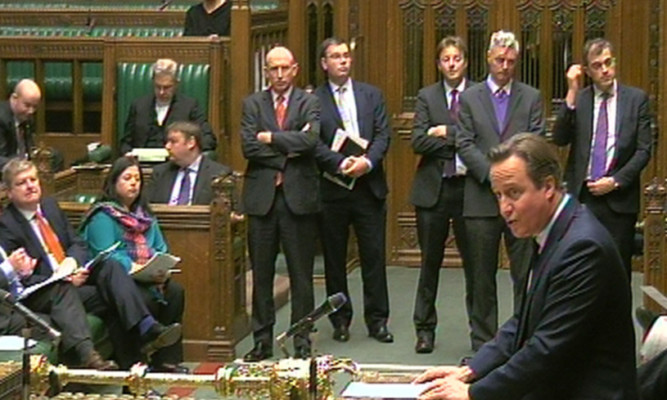North East Fife’s MP has vowed to keep fighting for an RAF return to Leuchars after it emerged Fife had once again been passed over in favour of Moray.
Barely a year and a half after Typhoons were transferred north by the UK Government, it emerged the Lossiemouth base will host a new fleet of maritime patrol aircraft.
But, despite Stephen Gethins’ pledge to continue battling in the corner of this constituency, the SNP was accused of neglecting the region in favour of the constituency of its leader at Westminster, Angus Robertson.
Speculation had recently mounted that Leuchars, now home to the Royal Scots Dragoon Guards, could be re-opened as an air base.
Instead David Cameron announced in his Strategic Defence and Security Review (SDSR) that the Boeing P-8 Poseidon aircraft will be in RAF Lossiemouth.
They will fill a gap left by the much-criticised decision in the last review to scrap a new generation of Nimrod aircraft.
Mr Gethins said he was “very, very disappointed” by the decision and argued that Defence Secretary Michael Fallon had “missed an opportunity” by not considering Leuchars’ facilities and strategically important coastal location.
He said: “Leuchars is ideally placed to a massive asset to the UK’s air defence capability and there is no doubt the former Conservative/Liberal Democrat coalition government made a huge mistake in closing it.
“The SDSR could’ve reversed that devastating decision. There is no reason why the base, which is now occupied by two Army regiments, could not accommodate aircraft as well.”
Yet, as speculation raged over the weekend that Scotland would miss out on new aircraft entirely, the SNP’s defence spokesman Brendan O’Hara raged about such a move being a “betrayal” the north of the country but did not mention Fife.
Mr Gethins last week lodged a motion at Westminster urging Leuchars was re-opened, but it received just eight signatures from the SNP’s 56 MPs and none from other parties.
Ex-Labour MP and Defence Committee member Thomas Docherty, now a candidate for the party in Mid Scotland and Fife, accused the SNP of supporting Lossiemouth over Leuchars.
He said: “It is quite clear Fife is an afterthought to the SNP with the patch of Alex Salmond and Angus Robertson the priority.”
Meanwhile, the Government has disclosed that replacing the Royal Navy’s ageing fleet of submarines that carry Britain’s Trident nuclear deterrent could cost up to £40 billion.
The Ministry of Defence now estimates that acquiring four new submarines will cost £31 billion over the course of the 20 year procurement programme – compared to a previous estimate of £25 billion – according to the Strategic Defence and Security Review (SDSR).
And a further £10 billion “contingency” has been set aside meet additional unexpected cost increases, reflecting the complexity of the project, with the first submarine due to enter service in the early 2030s, the SDSR said.
“The revised cost and schedule reflect the greater understanding we now have about the detailed design of the submarines and their manufacture, “ the report said.
The SDSR set out heavily-trailed plans for two new Army 5,000-strong “strike brigades” capable of deploying rapidly around the world as well as an additional £12 billion of equipment funding.
The unveiled SDSR also included big cuts to the MoD’s civilian workforce with a reduction of almost 30% to 41,000 over the next five years.
There will also be a new “pay model” for armed forces personnel – with an offer to new recruits that is intended to better meet their expectations and “targets resources on the people we need the most”.
In other measures, the MoD will acquire nine Boeing P8 maritime patrol aircraft to plug the gap left by the highly-criticised decision in the last review in 2010 to scrap a new generation of Nimrod aircraft.
There will be a 10-year extension to the operational lifespan of the RAF’s Typhoon jets and upgrade work to give them ground attack capabilities – effectively adding two additional frontline squadrons.
The Typhoons will now see service through to 2040 to answer RAF fears over the dwindling size of its resources – with the extended life span meaning there will be seven squadrons of around 12 aircraft.
As well as being enhanced to add ground attack capability to their aerial combat role, they will be fitted with upgraded stealth radar equipment.
The acquisition of the new F35 Joint Strike Fighter for the Royal Navy’s two new aircraft carriers will be accelerated – with 24 aircraft to available by 2023 rather than the previously planned eight.
The SAS and other special forces will get an extra £2 billion to improve their equipment, the RAF will double its number of drones, an extra £1.9 billion will be spent on cyber security and 1,900 new personnel recruited to the intelligence agencies.
